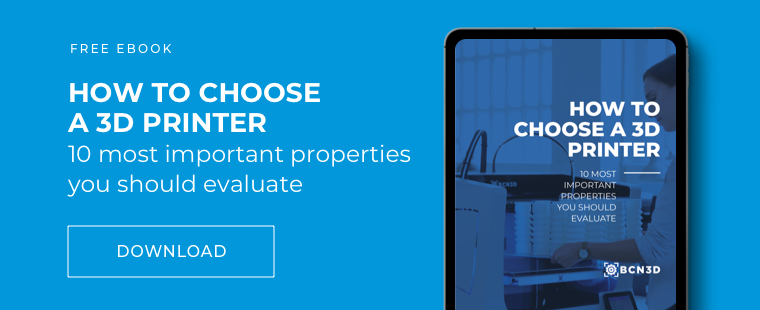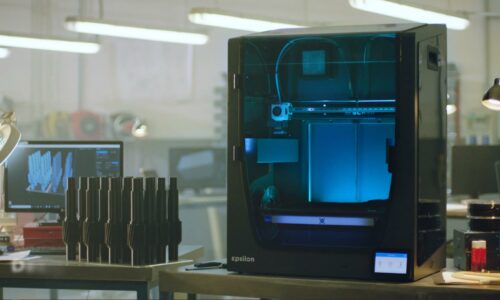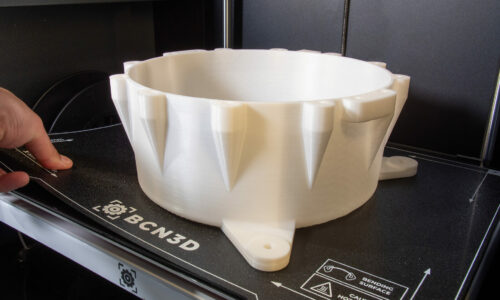3D Printing in Healthcare: 7 Applications
3D printing has already made its mark in the healthcare industry, and it’s just getting started!
The use of 3D printers in the healthcare industry has brought about many improvements and innovative solutions. From prosthetics to research breakthroughs, the applications of 3D printing in healthcare are boundless.
Let’s review 7 real-world applications of 3D printing in the healthcare industry.
3D Printing in Healthcare: 7 Examples
1: Masks for COVID19
This is very much a still on-going initiative, but this serves as a good example of how 3D printing can be used quickly in the medical field.
3D printer professionals, manufacturers, and hobbyists around the world have loaned their expertise, time, and knowledge in creating face shields, masks, and other aids that help protect healthcare workers as they fight against Covid-19.
Through open forums online and support networks, different medical instruments, PPE, and other important tools have been created using additive manufacturing. BCN3D has already shipped out over 4,200 3D printed face shields to hospitals throughout Spain
3D printing has been making breakthroughs in the medical field for years now, but this case highlights this technology’s speed and essential value.
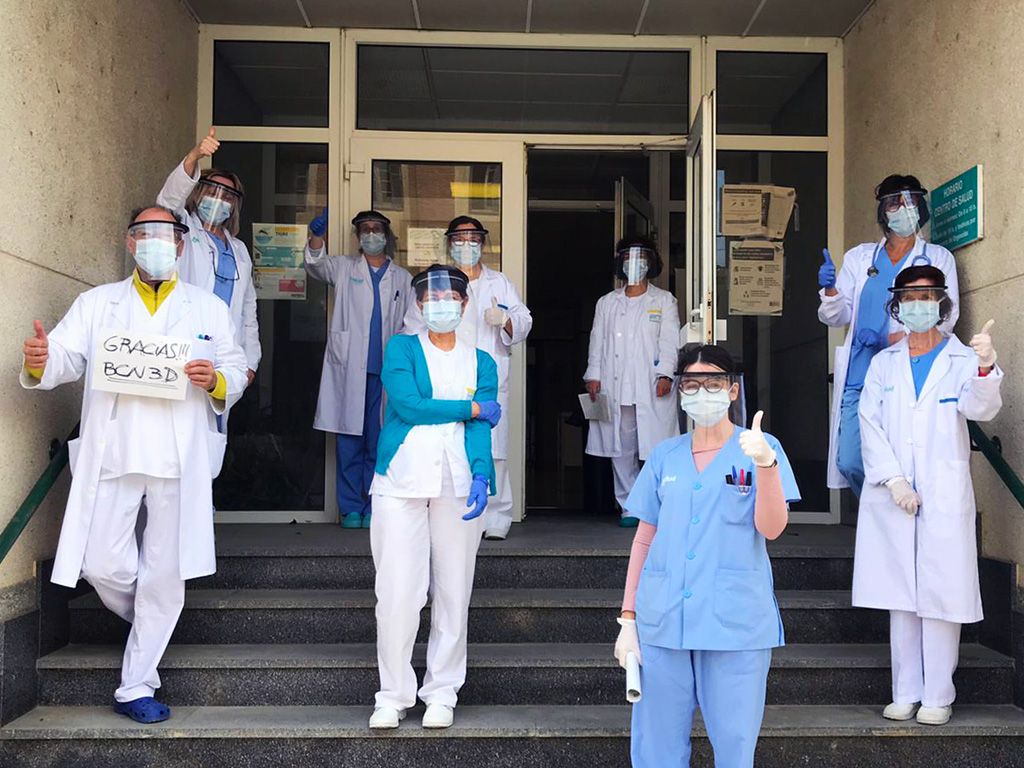
2. Hearing Aids
Did you know that there are over 10 million 3D printed hearing aids in the world? 3D printing has completely revolutionized how hearing aids are made, and it’s gone largely unnoticed.
Typically, hearing aids used to take days to weeks to make, and they were rarely fully customized. The wearer would have to make daily adjustments to get the piece to fit comfortably.
Now with 3D printing, fabrication time has been significantly shaved down. Similarly, the hearing aids can be fully customized to the wearer’s specific anatomy, using a scan of the wearer’s ear. This use of medical 3D printing has completely transformed an entire industry.
3. Isolating Breast Cancer Cells
Another innovative way 3D printing is used in healthcare is for research purposes. In this case, scientists from the University of Girona are using it to isolate breast cancer stem cells to better study them.
The researchers behind this initiative are working to develop a drug that successfully attacks tumor cells in the body to prevent a relapse, without damaging the healthy parts of the body. The particular cells they’re studying can remain in the body even after chemotherapy or radiotherapy.
Using BCN3D’s Sigma printer, the research team manufactured 3D scaffolds that imitated structures naturally found in the body. These structures then isolate the cells that are responsible for relapse, thus allowing the researchers to further analyze them and develop medicine to attack them.
This application is just one instance of how 3D printing is being used throughout research labs around the world.
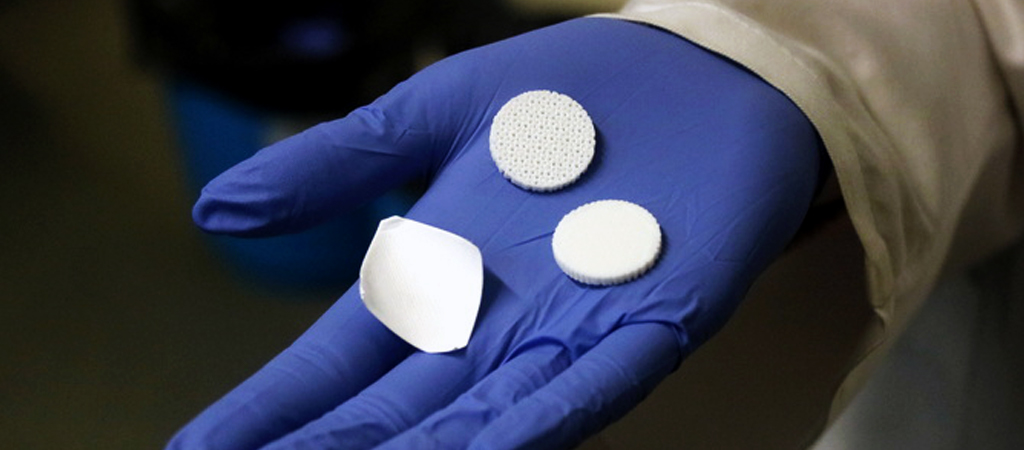
4. Bone Regeneration
Another great example of 3D printing being used for medical research is this bone regeneration study from New York University.
A research team is investigating if 3D printed implants can aid regeneration in animals with missing bones. The ultimate goal of this study is to see if this technology can be used for children and veterans with bone deformations or damage.
In the study, the researchers printed chemically coated ceramic scaffolds into the shape of the missing bone. As the real bone naturally regrows, the implant dissolves without harming the animal. 3D printing is especially useful in this application because it allowed the researchers to test several different methods beforehand.
5. Prosthetic Hand
Beyond research, another common use of medical additive manufacturing is printing prosthetics.
A great example of this is the story of Sara. Sara was born in Catalonia with an impairment in her right that didn’t allow her to use it properly.
Thanks to a Spanish television show and DomoTek, a 3D printing company dedicated to social change, a prosthetic hand was created specifically for Sara with all her desired specifications. DomoTek was able to use a BCN3D Sigma to print the hand exactly to Sara’s liking,: even using the printer’s dual extruder system to print two colors at the same time.
3D printing has revolutionized the types of designs and specifications prosthetics can have, at greater speeds and lower costs.

6. Innovative Drug Delivery
Medical 3D printing also opens the door for innovative methods of delivering medicine to patients.
At University College of London, researchers used additive manufacturing to develop a system for topically delivering medicinal acne treatment to patients.
The researchers scanned images of the patients’ noses and then 3D printed the devices to fit their features precisely. The flexible yet exact design of the tool ensured the acne treatment was delivering an even dose of the drug. The medicine was loaded into the printing filaments and then dissolved as a mask.
While it may seem simple, this study highlights the use of both 3D scanning and 3D printing for personalized drug delivery devices.
7. Practicing Surgical Operations
Another benefit of 3D printing in the healthcare industry is the emergence of printing models to practice before operations.
At Hospital Universitario Puerta del Mar in Spain, doctors and surgeons are using BCN3D Sigma printers to create replicas of patients’ organs and bones to practice before complex surgeries.
Printing these models allow surgeons to be quicker, safer, and more efficient during the surgery because they can conceptualize the procedure. The models are also used for teaching, as they can provide an additional low-risk format for students to learn.
Conclusion
3D printing has just begun to make its mark in the healthcare industry. We expect to see many more advancements as developments in filaments and applications expand. Whether used for research, creating devices that impact people’s day to day lives, or for teaching opportunities, one thing is for sure – 3D printing in the healthcare industry is here to stay.

